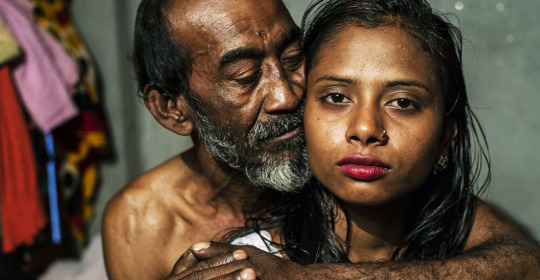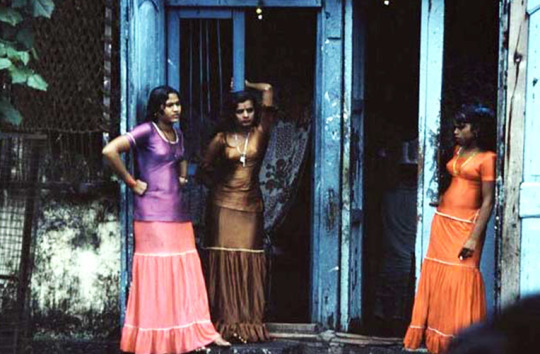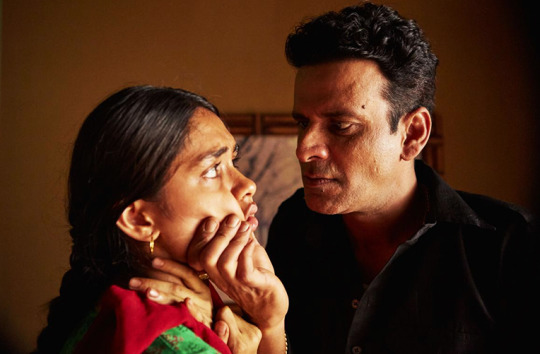#lakshmi bomb movie scenes
Explore tagged Tumblr posts
Text
Women's Day Special Scenes | South Blockbuster Movies Best Scenes In Hindi
Women's Day Special Scenes | South Blockbuster Movies Best Scenes In Hindi
Women’s Day Special Scenes | South Blockbuster Movies Best Scenes In Hindi #HappyWomensDay #WomensDay2022 #WomensDaySpecialScenes #SouthBlockbusterMoviesScenes ———————————— For More Movies Subscribe:@https://www.youtube.com/GoldminesTelefilms Follow Us…

View On WordPress
#airaa movie scenes#chandi movie scenes#dear comrade movie scenes#Jyothika Best Scenes In Hindi#kanchana 3 movie scenes#lady singham movie scenes#lakshmi bomb movie scenes#Madam Geeta Rani Movie Scenes#not out movie scenes#South Blockbuster Movies Best Scenes In Hindi#South Movies Best Scenes In Hindi#Tejasvini 2 Movie Scenes#Tejasvini Movie Scenes#u turn movie scenes#women&039;s day special scenes
0 notes
Text
Lakshmi Bomb Review Hindi Movie 2020
Story: Lakshmi can actually be a demanding and frank sessions court judge, also has been killed by goons due to her crackdown onto a notorious individual trafficking cartel.

The movie's story tackles problems like an addiction (on the person ), sex prejudice, gender trafficking, and violence against women. Despite the endearing vision, the message is still pretty muddied while the picture continues. Lakshmi (Lakshmi Manchu) struggles her strategy contrary to deeprooted relations between offense and bureaucracy, last but not least, indicts a dangerous, unlawful Vaikuntam (Prabhakar) later he had been captured trafficking women.
The initial 1 / 2 of the movie is quite confusing, and it has lots of flashbacks and insistent scenes, so you can not even determine what's happening. The script lacks some coherence using the screenplay. Plus, yet one is abandoned figuring the way Lakshmi's parents still reside with Lakshmi even though they cremating her at first of the first half. The movie needs less unwanted stories with just two guests in Lakshmi's house, demonstrating an attack on the senses using their over-the-top humor. The scenes where the 2 guests hide under bedsheets within their room are downright fair and childish. The acting, too, is quite standard, with just Lakshmi Manchu comprising a couple of ounce of authenticity into this screenplay. Krishna Murali and also Hema's autonomous dialogues start to have irritating after a little while.
The next half begins with Lakshmi's parents believed that Lakshmi's human body was inhabited by the phantom of her sister Priya who'd died during arrival. And that which follows is actually an important flashback of how Lakshmi's life straight from her arrival. Priya's ghost exerts Lakshmi, where she moves, and only before Lakshmi gets cremated, Priya conveys Lakshmi's human body and comes back alive. This causes Lakshmi's visitors to believe she has gotten back into life and is a significant deviation from the way the first half of the script performed. The film's remaining part is how Priya's soul eradicates the whole gang, for example, Vaikuntam.
There are way too many illogical turns and twists from the movie to allow the viewer to generate a sense of whatever. Plus, it'd have been surprised when crowds actually stumbled through the whole film. You may, too, select one routine day walk rather than watching this movie.
Aditya Kriplani's picture does not delve into why or how those women captured here. Without painting them victims or becharms, it only shows them workers hastening the sliver of distance the entire world has allowed them to use in. A distance that may not rely on these.
The picture, shot mostly during the nighttime, has fine chases, a few magnificent, shocking scenes, and a trendy backdrop score. However, it also includes a few strange, nearly glamorized, pretentious minutes when Laxmi suddenly determines to nurture a romantic relationship with Mumbai, the metropolis, by simply singing the same ode to it.
Download Now
1 note
·
View note
Text
Girl Trafficking In Hindi Cinema

My first brush with the law.
As a freelance journalist, my first and last brush with the law happened around an online article on trafficking. I had written about a wonderful documentary on women. One of the persons mentioned in the film and in my review, filed a defamation charge against the director of the film, the editors of the online magazine and against me for writing. The said person is shown approaching a police station, pretending to be a lawyer, to purportedly ‘rescue’ small girls and give them back to their ‘mothers.’ I later learnt that part of his earnings came from filiing false suits against any Tom, Dick and Harry he felt had defamed him in some way. Instead of putting me off, this incident challenged me to probe deeper into this thriving trade in human trafficking and also to find out how Hindi cinema has dealt with this serious issue.
I went deep into the economics and sociology of trafficking and the details were mind-boggling. Newspapers and magazines are rife with factual stories and case histories of real-life incidents. The human trafficking industry has a reported annual income of $8 billion, and the UN estimates that it may employ as many as 40 million women. Although human trafficking is illegal in almost every country, thousands of girls each year become sex slaves. Even when rescued by social workers, voluntary agencies and sometimes the local police, many of them go back to where they came from, mostly prostitution.
My experience of having watched umpteen films on trafficking, specifically four recent ones, shows that Indian filmmakers’ insight on the subject has evolved over the years. They have moved away from Gulzar’s Mausam, through Sagar Sarhadi’s Bazaar and T.S. Ranga Rao’s hard-hitting Giddh. They are bolder, forthright and not really bothered about what the CBFC has to say.
Related: Busting Child Prostitution In Varanasi | 101 Underground

The ugly world of bride trafficking. Image source: hindustantimes.com
Paro (2017) This short but poignant film draws attention to the illegal business of bride trafficking which goes on unabated, as there are no complaints or if there are, the police look the other way. Vijay Kumar, says he made the film based on a real-life experience, “No one calls the bride by her name because she leads an anonymous life within the family, tending to her bed-ridden husband who is unhappy about the entire situation, but helpless as his mother holds family decisions in her control. The custom of selling the girl as a bride is called Paro Pratha. What shocks is the fact that she accepts her life as a predestined reality and does not know that another kind of life exists beyond this market. She is just a commodity to be bought and sold again and again. All of them have the same name, Paro.” The film is made in Haryanvi because the story, based on true events, happens in a village near Rohtak where Vijay Kumar grew up. If a man buys a paro for Rs.50,000, he will sooner or later, try and sell her off for Rs.60,000, which brings human beings down to the economic laws of supply and demand.

Bollywood and its use of social causes. Image source: hindinews18.com
Mardaani (2014) I went with a friend to watch Mardaani not knowing what it was about but because I am a fan of Rani Mukherjee. Though the movie turned out to be a very unexpected experience. Rani as Shivani is a committed officer of the police force with a supportive husband who backs her despite odds. It’s the story of a powerful ego struggle between the police officer and the kingpin of the trafficking trade. Shivani is taken off the case but she continues to pursue it with the help of a couple of juniors.
I personally had a problem with the title of the film - Mardaani. It’s a well-known acronym for Lakshmibai, the Rani of Jhansi and was bestowed on her because of her manly qualities. But why must a police officer be termed “mardaani”? Is she not equally trained in taking on offenders as much as her male colleagues?
Another issue for me was the climax which shows Shivani pushing the girls to punish the young ring-leader by bashing him up so badly that he lands in a wheelchair. Can, and should, a high-ranking responsible police officer allow the victims to take the law in their own hands?
I felt the director was taking his audience on a jolly ride into girl-trafficking though the motives were distanced from this social issue. They were focussed on showcasing the versatility of Rani Mukherjee as a protagonist who can carry a film without the support of a hero, pure commerce to rake in the money and enlisting itself at film festivals through the subject of trafficking.
Related: The Madam Of A Brothel Told Me, “All That Matters In Life Is Big Boobs And Long Hair.”

13-year olds forced into prostitution. Image source: thecommunityjournal.com
Lakshmi (2014) I had similar problems with the title of this film. It’s ironical because in every second Indian middle-class home, the girl is named Lakshmi, perhaps in the hope that she will augur good fortune for the family. The film is hard-hitting but after a point, it becomes too in-your-face. The process of initiating the 13-year-old girl into prostitution is graphically detailed. The brothel madam teaches her to apply some ointment before servicing her clients to ease the pain. Lakshmi is also given hormone injections to flesh out her body before time, and is repeatedly raped by the pimp Chinna (Kukunoor) because she tries to escape. I personally found the repeated violence on Lakshmi and the other girls visually repulsive and voyeuristic and felt they could have been avoided. Add to this the terribly melodramatic climax that takes away the soul of the film.
At a special screening of Lakshmi for sex workers in a red-light area in Mumbai, Kukunoor was accosted by a group of extremely overwrought sex workers who wanted to know who played the nasty pimp in the film. “Agar woh mil jaye to hum ussey aisa sabak sikhaayenge ki naani yaad aa jayegi” (If we find him, we will teach him a lesson he’ll remember). When they learned that the director himself had played the pimp, the women attacked him till he had to be whisked away. He may have begun with the right intention but did not quite expect this negative reaction.

Love Sonia - a breath of fresh air. Image source: indiawest.com
Love Sonia (2018) The latest in this line is Love Sonia, directed by US based Tabrez Noorani. It’s about a 17-year-old village girl Sonia, who is very closely bonded to her younger sister Preeti. Their world is shaken when Preeti goes missing, actually having been sold by her poverty-stricken father to flesh traders. Sonia goes looking for her and lands up in the same situation. This journey exposes the violent underpinnings of trafficking in human flesh, mainly of very young girls. It travels through the international den of trafficking and sex trade to Hong Kong and Los Angeles.
My personal grouse is with different aspects of the film - the camera focussing on the pained face of the sad father (Adil Hussain) because I feel it rings false. No father can be forgiven for selling his daughter. Scenes are very graphic and violent and many among the audience may not be able to take it. The good thing about the film is the lack of stars, except Richa Chada and Frieda Pinto (if we can call them stars). It is mainly a female dominated film with a peppering of Manoj Bajpayee who does a menacing act well.
Related: A Brothel That Is James Bond’s Namesake, A Bomb Site And Some Dance-Bar Hopping
The question is – are such films genuine attempts to draw attention to trafficking? Or are they trying to piggyback on trafficking to gain easy access to film festivals and awards? The subject lends itself to the voyeuristic instincts of a sex-hungry audience and this can function as a temptation for a new, or a struggling filmmaker to shift focus from social responsibility to titillation and sensation, which will make a producer happy. These films offer scope for a lot of skin show, vulgar dialogues, sensual body language and doses of sex and violence. They are full Bollywood masala - vulnerable girls, shady agents, sex workers, brothel madam, pimp, muscle man, NGO worker and last but not the least, the client.
In the final analysis I feel, though we have moved away from the likes of Mausam and Bazaar, we still have a long way to go. But these recent films prove that cinema is not only for entertainment but also for information, awareness and social change.
Disclaimer: The views expressed in this article are independent views solely of the author(s) expressed in their private capacity and do not in any way represent or reflect the views of 101India.com
By Shoma A. Chatterji Cover photo credit: washingtonpost.com
0 notes